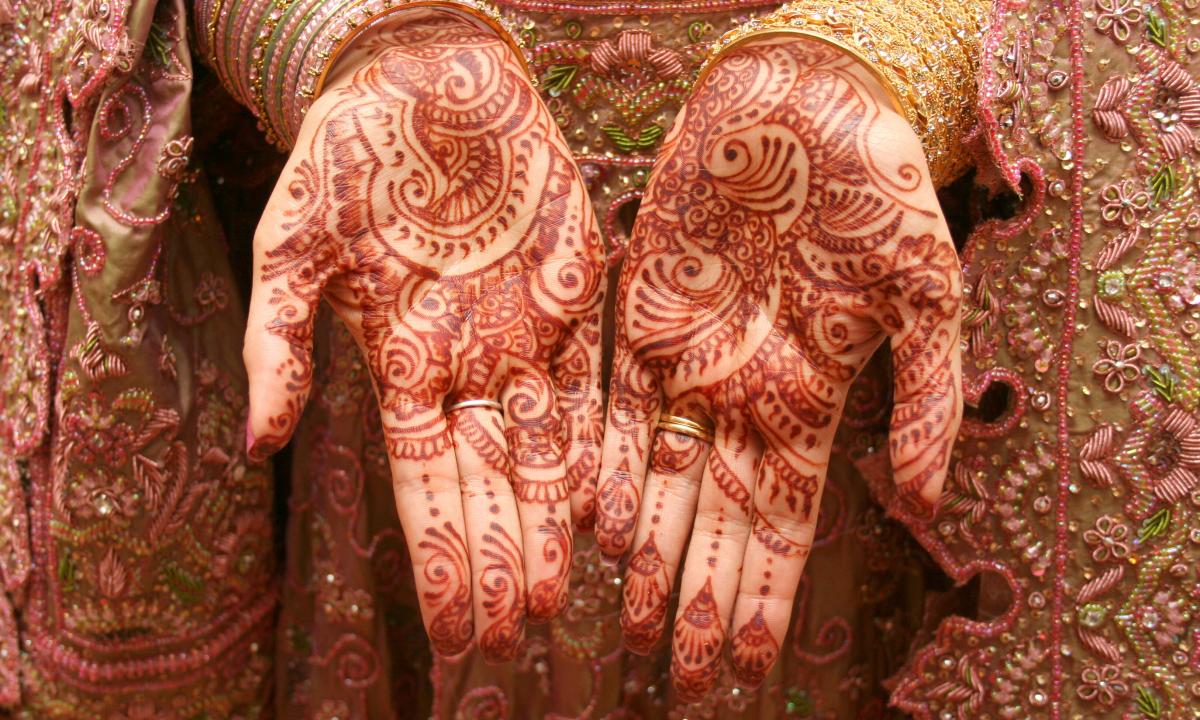The temporary tattoos executed by means of henna - popular hobby of modern youth. Not everyone is ready to decide to apply the drawing or inscription which will remain there for ever on body. Henna gives the chance to decorate itself for a while, and besides absolutely without serious consequences. The pattern keeps about two weeks, and if desired it can be washed away easily. But at this, at first sight, thoughtless entertainment - rather serious historical roots.
Tattoos henna: sources of traditions
This way of decoration of body has been thought up about 5000 flyings ago and for the first time is noticed in Ancient Egypt. In the 12th century painting by henna has appeared in India, and has received the name Mende (or mehendi). For the Indian beauties it is the obligatory festive ornament, in particular, which is closely knit with wedding traditions. In India the wedding ceremony of painting of body of the bride during which girlfriends and the senior relatives carefully removed intricate patterns on the girl's body has still remained, talking to it about the forthcoming family life. Besides, newly married after the wedding it was exempted from any homework until from her hands completely are erased festive by mehendi.
In many countries of the East painting from henna was not just ornament, and charm from failures, disease, malefice, evil spirits. Women applied on body patterns when considered that they especially need protection - for example, during pregnancy or before some important vital event. Similar beliefs in the east are alive still.
The different countries - different styles
Drawings were used by henna in many countries: besides already mentioned India, they are widespread in North Africa, Indonesia, Pakistan, the Southern Asia. In each country - the traditional patterns and styles of the drawing. So, in Africa painting of body consists generally of geometrical figures, lines, points and the stylized flower motives, its clearness and compliance with form of the parts of body decorated with it is appreciated. The Indian patterns very difficult, also remind lacy gloves or stockings. Among intricate lines and drops it is possible to distinguish the stylized images of lotus, peacock, mango fruit, various religious symbols. Indian can cover with mehendi quite most part of hands or legs: hands - to the forearms, leg - to knees above. Similar styles of the drawing are popular also in Pakistan. In the Middle East the women prefer to decorate themselves with painting, consisting of the stylized flower motives similar to traditional east embroidery. And here the style of drawing mehendi in Indonesia - at the same time reminds Indian and Middle Eastern, but differs in completely painted over fingertips and foot.
Mehendi in our day
For drawing on body the thin wooden stick, brush, or paper cone with the pointed end is used. And the painting structure is made of the dried-up henna tree leaves. It is absolutely harmless to health, and even makes favorable impact on skin and hair. But at chronic diseases of skin it is not recommended to apply on it patterns from henna nevertheless, without having consulted previously to the doctor. Not so long ago the fashion for painting of body henna has come also to Europe. Stars of cinema and platform, for example, Madonna and Demi Moore became her first adherents. Admirers, certainly, have followed their example. Now mehendi known as of biotattoo, and is available to any visitor of beauty shop. Masters of painting will offer you set of patterns at choice including those that will remind of traditions of India and the East, having given to your shape droplet of exotic and riddle.
